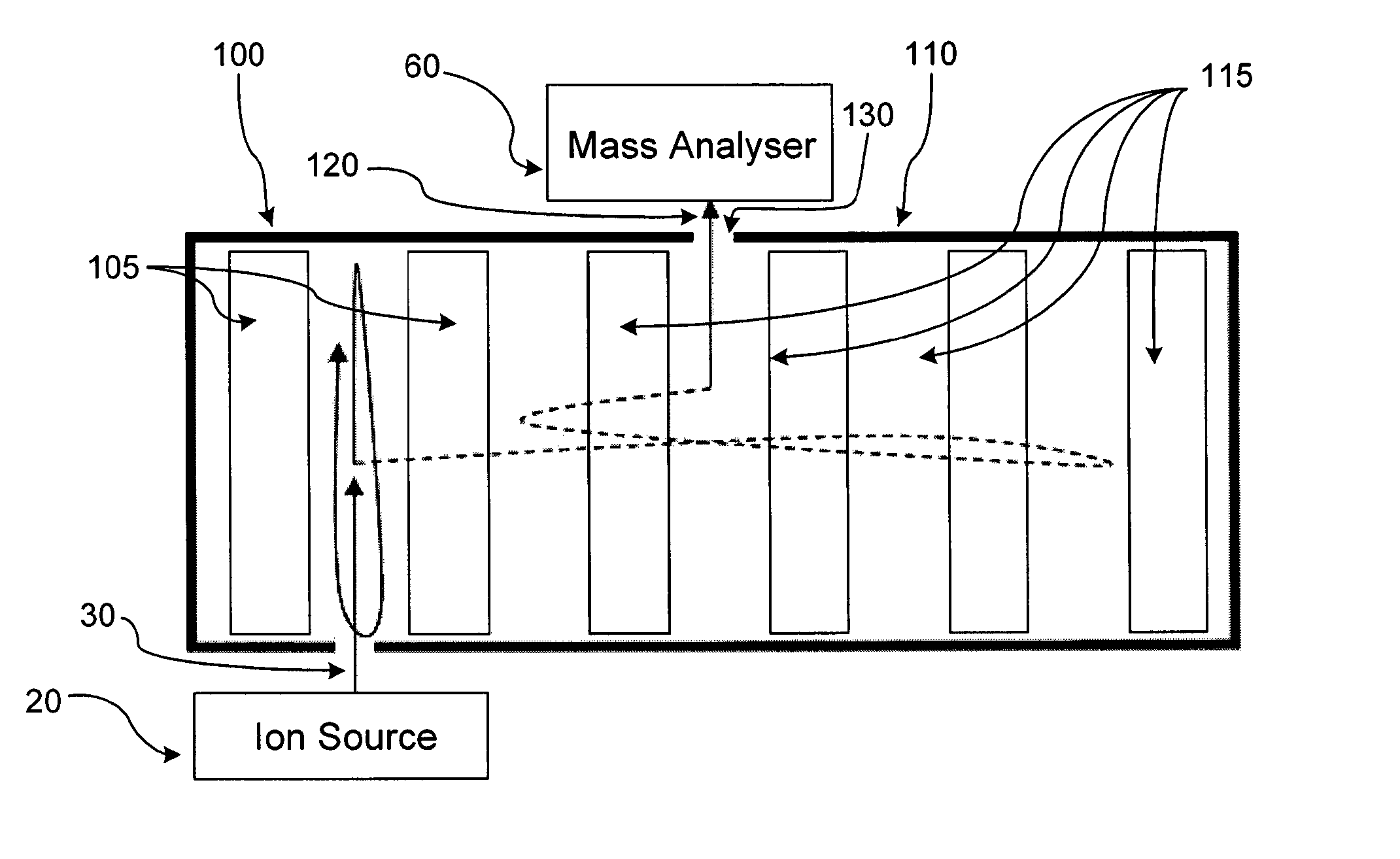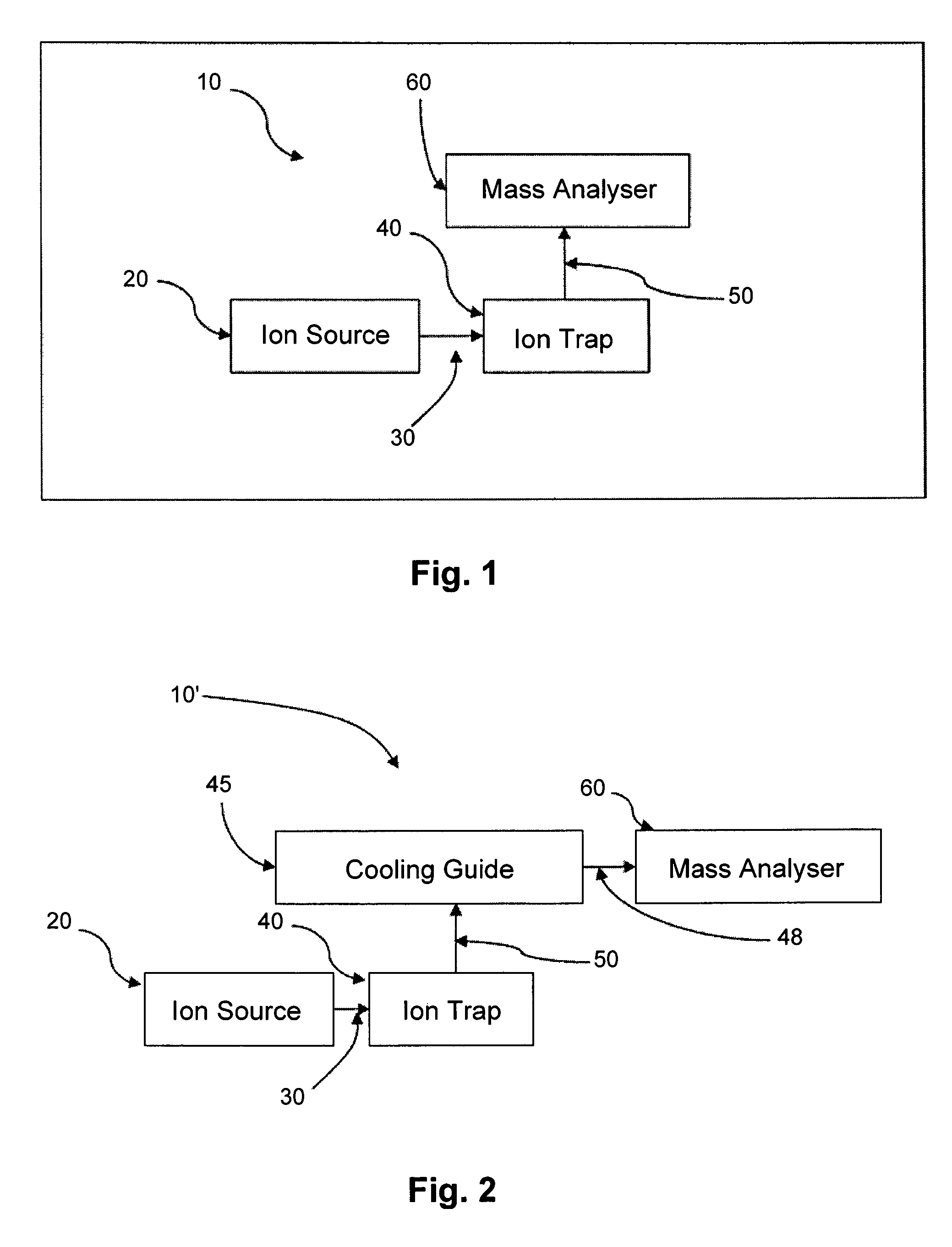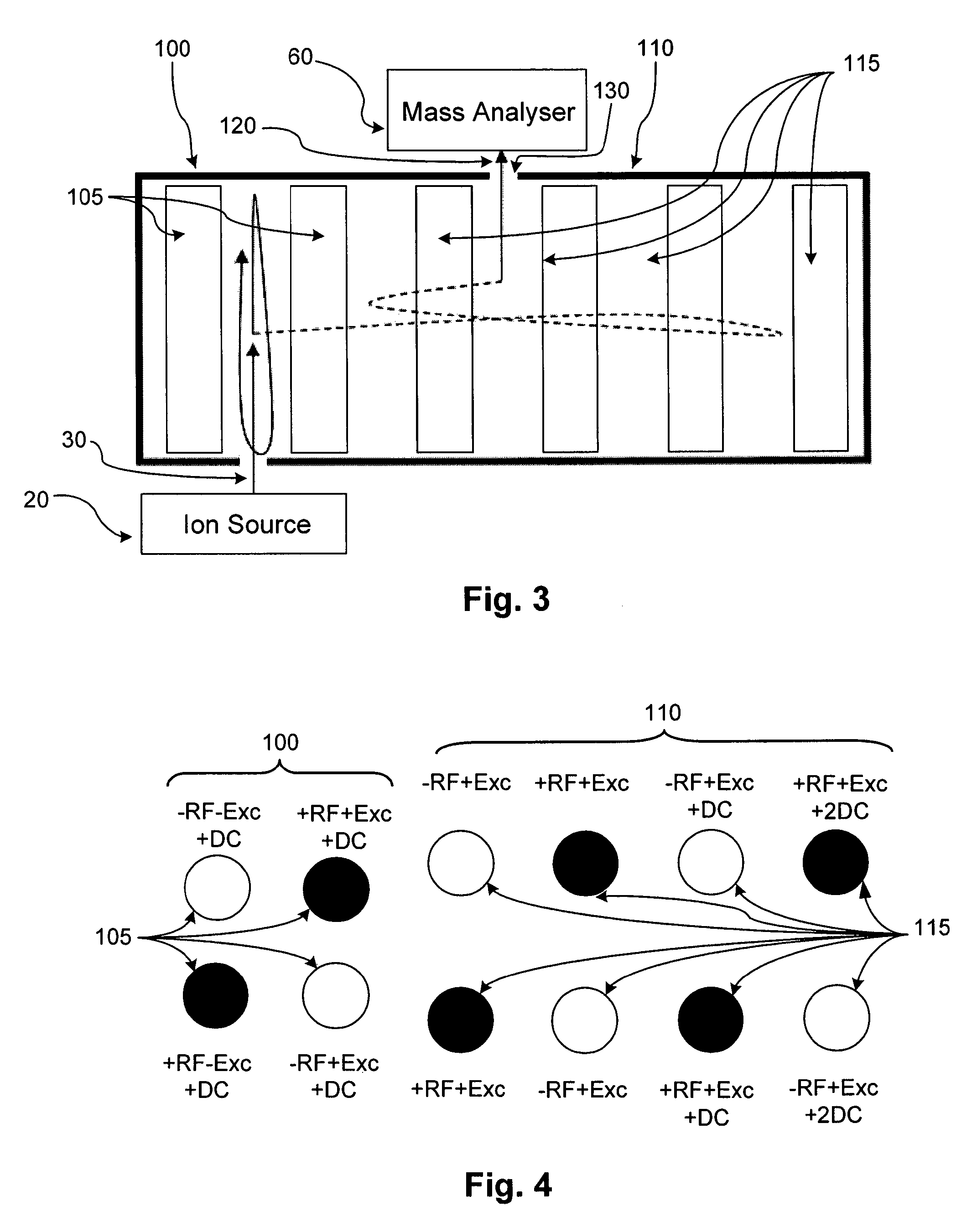High duty cycle ion spectrometer
a spectrometer and high-duty cycle technology, applied in the field of ion spectrometers, can solve the problems of wasting ions during the analysis cycle, wasting ions, etc., and achieve the effects of improving the ion ejection energy, speeding up the ejection efficiency, and being less dependen
- Summary
- Abstract
- Description
- Claims
- Application Information
AI Technical Summary
Benefits of technology
Problems solved by technology
Method used
Image
Examples
first embodiment
[0050]Referring first to FIG. 1, there is shown a schematic diagram illustrating the present invention.
[0051]A mass spectrometer 10 comprises an ion source 20; an ion trap 40; and a sequential scanning mass analyser 60. The ion source 20 generates ions 30 continuously with a first range of mass to charge ratios. The ion trap 40 receives ions 30 continuously with the first range of mass to charge ratios and orthogonally ejects ions 50 with a second range of mass to charge ratios. The second range of mass to charge ratios is narrower than the first range of mass to charge ratios. The ions 50 are then received by the sequential scanning mass analyser 60 for analysis.
second embodiment
[0052]Referring next to FIG. 2, there is shown a schematic diagram illustrating the present invention.
[0053]A mass spectrometer 10′ comprises an ion source 20; an ion trap 40; a cooling guide 45 and a sequential scanning mass analyser 60. The ion source 20 generates ions 30 with a first range of mass to charge ratios. The ion trap 40 receives ions 30 with the first range of mass to charge ratios and orthogonally ejects ions 50 with a second range of mass to charge ratios to the cooling guide 45. The second range of mass to charge ratios is narrower than the first range of mass to charge ratios. The cooling guide 45 cools the received ions 50, without substantial fragmentation. The energy of the ions is typically reduced to a few eV or even to less than 1 eV. Cooled ions 48 are ejected axially to the sequential scanning mass analyser 60 for analysis.
[0054]Referring now to FIG. 3, there is shown a top view of an embodiment of the present invention according to the schematic diagrams o...
PUM
| Property | Measurement | Unit |
|---|---|---|
| ion current | aaaaa | aaaaa |
| average ion current | aaaaa | aaaaa |
| mass to charge ratios | aaaaa | aaaaa |
Abstract
Description
Claims
Application Information
 Login to View More
Login to View More - R&D
- Intellectual Property
- Life Sciences
- Materials
- Tech Scout
- Unparalleled Data Quality
- Higher Quality Content
- 60% Fewer Hallucinations
Browse by: Latest US Patents, China's latest patents, Technical Efficacy Thesaurus, Application Domain, Technology Topic, Popular Technical Reports.
© 2025 PatSnap. All rights reserved.Legal|Privacy policy|Modern Slavery Act Transparency Statement|Sitemap|About US| Contact US: help@patsnap.com



